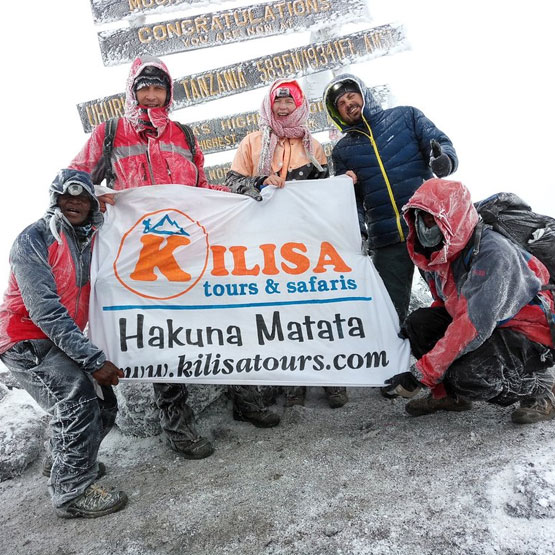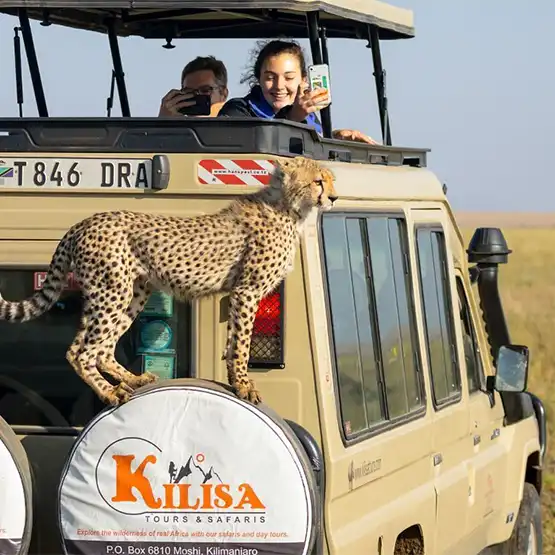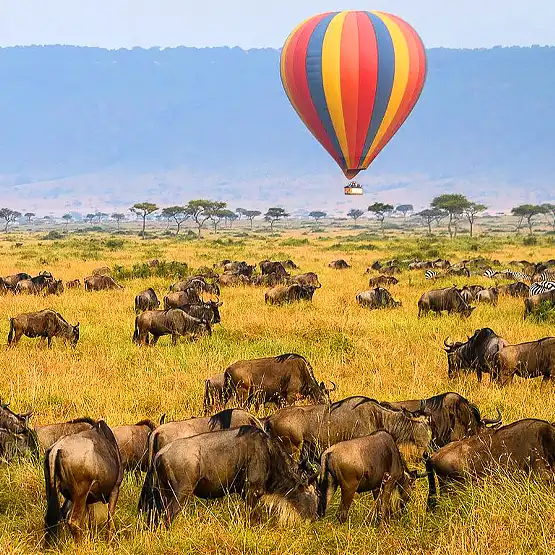Mount Kilimanjaro rises majestically from the plains of Tanzania, presenting climbers with a variety of routes. There are six main paths to the summit, each offering unique challenges and stunning landscapes. But selecting the best route can influence the success of your trek significantly.
Among these routes, the Machame Route stands out for its scenic beauty and success rate. Often referred to as the “Whiskey Route,” it allows for better acclimatization due to its “walk high, sleep low” approach, reducing the risk of altitude sickness. This route has a commendable success rate of about 85%, making it a favored choice among seasoned climbers.

Which Is the Best Route for Climbing Kilimanjaro
Choosing the best route for climbing Kilimanjaro can be quite a task. The Machame Route, also called the “Whiskey Route,” is highly popular due to its scenic beauty and diverse landscapes. This path allows for better acclimatization, helping climbers adjust to the high altitude. With an 85% success rate, it is favored by many climbers. This route takes about six to seven days to complete.
Another fantastic option is the Lemosho Route. Known for being a bit quieter and offering stunning views, it takes about eight days to complete. This route passes through lush rainforests and offers ample time for acclimatization. Because of its beautiful scenery and fewer crowds, it’s a favorite among experienced climbers. The path also has a higher success rate compared to other routes.
If you prefer a shorter trek, consider the Marangu Route. Often called the “Coca-Cola Route,” it’s the only climb with hut accommodations instead of camping. This makes it a bit more comfortable for some climbers. Spanning five to six days, it takes the same way up and down. Although it’s less scenic, it is a faster and well-trodden route.
According to here is the post, the Northern Circuit is the longest and has a lower risk of altitude sickness due to its length. This route takes nine days, circling around the mountain before reaching the summit. It offers diverse ecosystems and breathtaking views. The trail is less crowded, providing a more serene climbing experience. To learn more, check this article about other challenging routes like the Umbwe Route.
1. Machame Route: The Scenic and Popular Choice
The Machame Route, also known as the “Whiskey Route,” is incredibly popular. This route is famed for its lovely scenery, featuring rainforests, moorlands, and alpine deserts. It starts at Machame Gate and goes through five distinct zones. Climbers often spot exotic wildlife and beautiful plants along the way. The trail is longer, allowing better acclimatization.
Due to its “walk high, sleep low” approach, the Machame Route helps reduce the risk of altitude sickness. This method involves ascending to higher altitudes during the day but descending to sleep at lower altitudes. It typically takes six to seven days to trek, giving your body ample time to adjust. This increases your chances of reaching the summit successfully. Many climbers experience fewer issues with high altitude on this route.
For those who want a challenge, the trail is not the easiest. The climbing involves some steep and rugged terrain. However, the effort pays off with stunning views and an exciting adventure. The Barranco Wall, though intimidating, offers an exhilarating experience. This route is ideal for adventurous hikers who are physically fit.
Group dynamics on the Machame Route are often vibrant and supportive. Since it is a popular choice, you’ll meet many fellow adventurers on your journey. This camaraderie adds to the enjoyment of the climb. Guided tours, like those offered by Kilisa Tours, ensure you have experienced guides and necessary support. For more details on various Kilimanjaro routes, you might find this article useful.
2. Lemosho Route: Remote and Beautiful
The Lemosho Route is ideal for those seeking solitude and stunning scenery. Starting from the western side of Kilimanjaro, it offers a less crowded path compared to other routes. Hikers can enjoy expansive views and diverse landscapes as they ascend. This trail passes through lush rainforests and moorlands. It’s perfect for those looking for a peaceful trek.
One advantage of the Lemosho Route is its ample time for acclimatization. The trek spans 7 to 8 days, helping hikers adjust to the altitude gradually. This increases the likelihood of reaching the summit successfully. Many find the extra days helpful for enjoying the trek without rushing. It’s a great choice for first-time climbers.
The diverse terrains on the Lemosho Route offer a unique experience. Hikers move from forests full of wildlife to high alpine deserts. The route also provides spectacular views of the Shira Plateau, one of the largest high-altitude plateaus in the world. Near the summit, you’ll experience the striking beauty of glacial landscapes. Nature enthusiasts will find this route particularly rewarding.
The trail requires a guide and porters, making it a safer and more enjoyable climb. Companies like Kilisa Tours provide experienced guides to lead the way. This makes the trek both informative and secure. To learn more about this scenic route and its details, you can check according to the article. They offer comprehensive information on what to expect during your climb.
3. Marangu Route: Classic and Comfortable
The Marangu Route, often called the “Coca-Cola Route,” is known for its comfort and tradition. This route is the only one offering dormitory-style huts, making it a popular choice for those preferring to avoid camping. The huts provide beds, basic amenities, and even solar lighting. This makes the trek less demanding compared to other routes. Many climbers appreciate the added comfort after a long day of hiking.
This route usually takes five to six days to complete. It’s the shortest and least expensive option to reach the summit of Mount Kilimanjaro. You start at Marangu Gate and pass through rainforests, moorlands, and high-altitude deserts. The last part of the trek includes a night climb to reach the summit at dawn. This allows trekkers to witness a breathtaking sunrise from the top of Africa.
The Marangu Route follows the same path up and down. This makes it easier for those who prefer a straightforward trail. However, this also means climbers miss out on the varied landscapes other routes offer. Despite this, the Marangu Route has its own unique charm. The simplicity and predictability appeal to many, especially first-time climbers.
Acclimatization on the Marangu Route can be more challenging due to its shorter duration. It’s important to follow a good pace and stay hydrated to minimize the risk of altitude sickness. Although it’s considered easier, it does require physical fitness and proper preparation. Preparing well and knowing the risks can help ensure a successful climb.
Marangu Route is also popular for historical reasons. It’s the oldest and most established trail on Kilimanjaro. This route has been used for decades and has helped thousands of climbers reach the summit. Its rich history adds to the overall experience, making it a classic choice for many. To explore more route options, you can visit this article for insightful details.
4. Rongai Route: Quiet and Gentle
The Rongai Route is perfect for those seeking a quieter and more gentle trek up Mount Kilimanjaro. Starting from the northern side near the Kenyan border, it offers a unique perspective compared to other routes. This trail is less frequented, giving hikers a more secluded experience. The Rongai Route is also known for its gradual ascent, making it easier on the body. This makes it a suitable choice for those new to high-altitude trekking.
One of the highlights of the Rongai Route is its diverse landscapes. Hikers pass through different ecological zones, from lush rainforests to alpine deserts. The trail also offers excellent chances to spot wildlife, such as colobus monkeys and buffaloes. The journey includes amazing views of Mawenzi, Kilimanjaro’s second-highest peak. The changing scenery keeps the trek interesting and visually rewarding.
Another appealing aspect is the Rongai Route’s dry climate. The northern side of the mountain tends to be drier than the southern and western routes. This reduces the likelihood of encountering muddy paths and rain. The clearer skies provide stunning views for most of the trek. However, it’s still important to be prepared for chilly nights and potential rain higher up.
The Rongai Route typically takes six to seven days to complete. This extended duration allows for better acclimatization and a higher summit success rate. Climbers have enough time to adjust to the altitude without feeling rushed. The final night’s ascent to the summit is challenging but rewarding. Reaching the top at dawn offers breathtaking views of the sunrise over Africa.
While the Rongai Route is considered less technical, it still requires preparation and fitness. Guided tours from companies like Kilisa Tours ensure you have the support you need throughout the trek. Guides provide valuable tips and assistance, enhancing the overall experience. For more details on the Rongai Route, and other Kilimanjaro routes, explore this article.
5. Northern Circuit: Longest and Most Immersive
The Northern Circuit is the longest and most immersive route on Kilimanjaro. Because it circles nearly the entire mountain, it provides diverse landscapes and stunning views. This route starts from the Lemosho trail and then veers north, offering a unique perspective. The journey spans nine days, allowing ample time for acclimatization. This extended duration leads to a higher success rate for reaching the summit.
One of the key benefits of the Northern Circuit is its low traffic. Unlike other routes, this path remains relatively quiet. Hikers can enjoy the serenity and solitude, making it a peaceful experience. The isolation also means less crowded campsites, ensuring more comfort and privacy. It’s a great choice for those looking for a more personal adventure.
The Northern Circuit offers a rich variety of ecological zones. You will trek through thick forests, moorlands, and the arctic zone near the summit. The route provides panoramic views, including glimpses of the Kenyan plains. The breathtaking scenery changes day by day, making every step exciting. Wildlife spotting opportunities are also abundant, adding to the trek’s allure.
This route has another advantage: a gradually ascending path. The longer and more gradual climb helps reduce the risk of altitude sickness. With a “walk high, sleep low” approach, climbers can acclimate more effectively. According to this post, the Northern Circuit’s design maximizes safety and success. This makes it one of the best options for those concerned about altitude challenges.
Though the Northern Circuit is the longest, it is well worth the effort. The extensive journey offers an in-depth Kilimanjaro experience. Guided tours, like those from Kilisa Tours, provide knowledgeable guides to enhance your trek. They ensure all logistics are handled, allowing you to focus on the climb. To explore more about this route, have a look at this article.
Factors to Consider When Choosing a Kilimanjaro Route
When choosing a Kilimanjaro route, one crucial factor is the duration of the climb. Some routes take as little as five days, while others can extend up to nine days. Shorter routes can be more challenging due to less time for acclimatization. Longer routes allow better adjustment to high altitudes, reducing the risk of altitude sickness. The length of your trip will significantly impact your overall experience.
The level of difficulty is another important consideration. Routes like Machame are scenic but physically demanding with steep sections. If you’re seeking an easier climb, the Marangu Route offers a gentler ascent and comfortable hut accommodations. However, easier routes might compromise on variety in landscapes and views. Knowing your fitness level and preparing accordingly can make a big difference.
Scenery preferences also play a role in decision-making. Each route on Kilimanjaro passes through different ecological zones with unique views. For instance, Lemosho and Northern Circuit provide diverse scenery from rainforests to alpine deserts. Rongai offers quieter trails with beautiful wildlife sightings along the way. Choose a route that aligns with what you want to see and experience.
- If you’re looking for social interaction, popular routes like Machame or Marangu will have more climbers.
- For those desiring privacy, Rongai or Northern Circuit would be better choices due to fewer crowds.
- Selecting guided tours with experienced companies like Kilisa Tours ensures safety and enhances your trekking efforts.
Your budget is also an essential factor when deciding on a route. While shorter treks may cost less due to fewer days spent on the mountain, longer treks often provide better chances for summit success but at a higher expense. It’s important to balance cost considerations with other priorities such as safety, comfort, and enjoyment of the trek itself.
>`
Preparation Tips for Climbing Kilimanjaro with Kilisa Tours
Preparing for a Kilimanjaro climb requires physical training. Focus on building your endurance with activities like hiking, running, and swimming. Cardiovascular exercises will help improve your stamina. It’s also important to do strength training to prepare your legs and core. Regular exercise will make the trek more enjoyable and less strenuous.
Proper gear is essential for a successful climb. Equip yourself with high-quality, breathable clothing suitable for varying weather conditions. A sturdy pair of hiking boots is crucial to protect your feet and provide good support. Layers are key, as temperatures can change drastically from the base to the summit. Don’t forget a good-quality sleeping bag for the cold nights.
Acclimatization is crucial when climbing Kilimanjaro due to the high altitude. The more time your body has to adjust, the better. Kilisa Tours offer routes that provide ample time for acclimatization. It’s recommended to follow a “walk high, sleep low” method to reduce the risk of altitude sickness. Staying hydrated and eating well are also important to help your body cope.
- Pack essential items like a first aid kit, sunscreen, and sunglasses.
- Consider bringing snacks that are high in energy to keep you fueled during long days of trekking.
- Invest in trekking poles for extra support on steep and uneven terrains.
- Remember to bring a headlamp for early morning or nighttime treks.
Mental preparation is just as important as physical readiness. Developing a positive attitude can make a huge difference. Mentally prepare yourself for the challenges ahead and focus on the rewarding experience of reaching the summit. Engaging in relaxation techniques, like deep breathing and meditation, can help manage stress. Having the support of Kilisa Tours’ experienced guides can also boost your confidence.
Altitude Sickness: Prevention and Management on the Climb
Altitude sickness can affect climbers as they ascend higher altitudes, making prevention and management crucial. Symptoms can start with headaches, nausea, and dizziness. To prevent altitude sickness, it’s important to acclimate properly. Climbing slowly and taking rest days helps your body adjust. Using the “walk high, sleep low” method is also effective.
Hydration is key in preventing altitude sickness. Drink plenty of water throughout the day to keep your body hydrated. Avoid alcohol and caffeine as they can lead to dehydration. Eating a high-carbohydrate diet can also help maintain energy levels. Staying well-nourished is equally important for managing altitude effects.
Recognizing early signs of altitude sickness is vital. If you experience severe symptoms, it’s important to descend to a lower altitude quickly. Medications like acetazolamide can aid in acclimatization. Always consult with a healthcare provider before taking medications. Understanding and responding to symptoms promptly can make a huge difference.
- Maintain a steady pace and avoid overexertion.
- Listen to your body and take breaks when needed.
- Use a portable oxygen device if necessary.
- Stay in communication with your guide about how you’re feeling.
Guided tours, such as those offered by Kilisa Tours, have experienced guides trained to handle altitude sickness. They can provide advice and support during your climb. Listening to their guidance can help ensure a safer journey. Preparing well and knowing how to prevent and manage altitude sickness can lead to a more enjoyable and successful climb.






